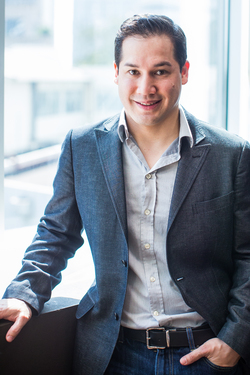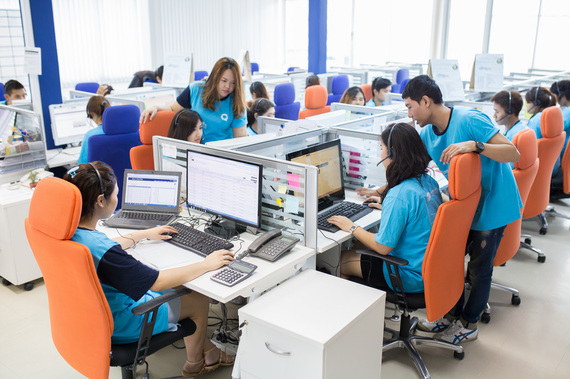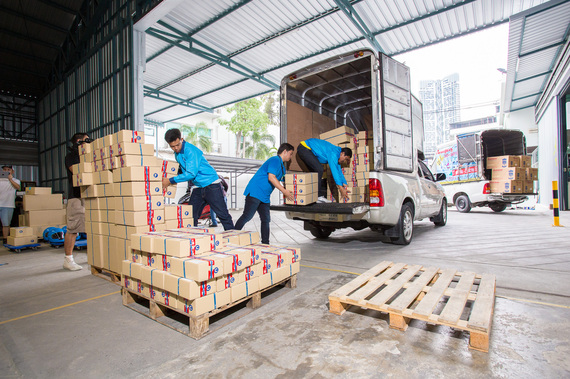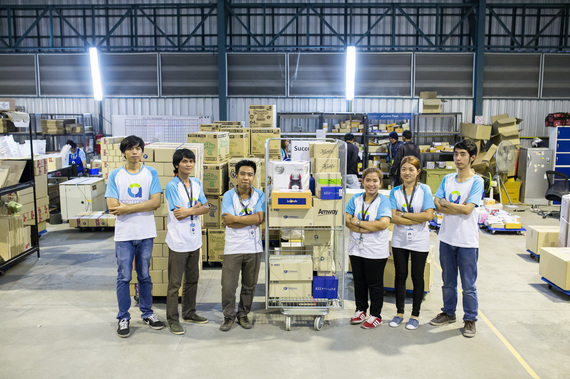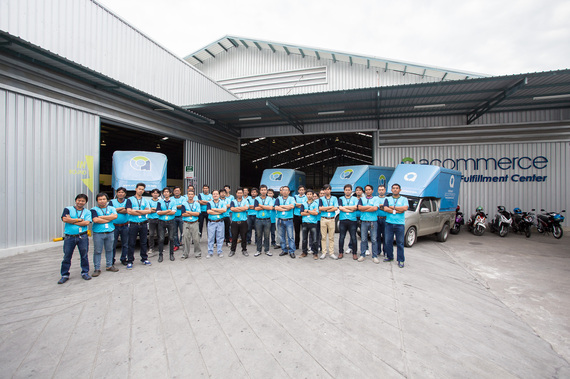Startup Insider is a series of articles with the goal of helping aspiring founders and entrepreneurs understand the ins and outs of starting a startup. We hope to dig deeper and showcase stories, advice and lessons from founders, investors and other key players in the growing startup ecosystem all over the world. You can sign up to stay up to date with this series here.
---
Most entrepreneurs are able to successfully build and exit one or two companies in their lifetime. There are a few like Elon Musk who are able to build three, four and five companies that really impact industries. Very few people are in this league of entrepreneurs. Why? Because you have to be a little bit crazy, a little bit different, and you have to have a different type of drive.
There are a select few entrepreneurs in Silicon Valley who have this drive, and there are even fewer in Asia. One of the few include Paul Srivorakul who successfully exited three companies before starting aCommerce, an end-to-end eCommerce solutions company that provides myriad of services for clients like Zalora, LINE, Nestle, Nescafe, AIS and more.
For aCommerce CEO Paul Srivorakul, it's the excitement of the Internet age and its rapidly changing landscape that motivate and fuel him to keep going despite all the challenges he faces and the sacrifices that comes with the rollercoaster ride of building a business. He said, "You're always learning something new; it's always a new challenge everyday."
In the span of two years, aCommerce has grown from 10 employees to 600 employees and operates in Thailand, Indonesia and the Philippines, with their biggest warehouse housed in Indonesia.
This rapid growth doesn't come out of nowhere. aCommerce is a product of the experience of Paul, his brother Tom Srivorakul and teammates Piers Bennett, Peter Kopitz and the rest of the aCommerce team. The core team of aCommerce is battle-tested, having built three other startups from the ground up and successfully exiting all three, their last one being Ensogo, the daily deals site that got acquired by LivingSocial.
I got the opportunity to sit down and go behind the scenes to chat with aCommerce CEO Paul on his startup journey and lessons he has learned not only from his first three successful startup exits, but also from the way he's rapidly building the eCommerce industry in Southeast Asia with aCommerce.
First Ventures in the Internet Space
Even back in his twenties, Paul had always wanted to do something in the Internet space. After graduating from UC Berkeley, he had started his career in sales at Ask Jeeves where he got an inside look at how all the companies were making so much progress and money using the internet. He shared, "They would advertise on search then you'd see them grow and you could just see that this was the next frontier."
Convinced that they had to bring this whole Internet thing to Thailand, Paul convinced his brother Tom to come back with him to Thailand. They ended up coming back to Thailand right during the dotcom crash. He shared, "We learned that the ads market in Thailand was nonexistent. So we saw this opportunity in the Internet space but we didn't know anything. We were just a bunch of 20 year olds."
This would quickly change after Paul picked up a Businessweek magazine and read an article about how, after the dotcom crash, entrepreneurs in the U.S. started going to companies offering their services only on Mondays, Wednesdays and Fridays, then they would work in the company building on their own projects during Tuesday and Thursday.
After reading that article, Paul went ahead and pitched the same setup to a local media company. He shared, "They would pay me $500 to manage their website and my brother and I got desk space in the middle of this 150-man company. We were in the middle of sales, marketing and all these other departments. We saw what it was like to do business."
Paul then started learning how to build websites and started selling them to clients. To his surprise, the sales guys around them started asking more about what they did and even asked them if they could sell what Paul and his brother were building. A new business was born.
A lucky break would follow, as Paul and his brother would become the exclusive Thailand partners of the Microsoft Service Network (MSN). With this, their first real business, Newmedia Edge, would grow from two people and revenues of $150,000 to 24 people and revenues of over $2.5M in one year.
This would just be the start. Paul would co-found another company called Admax, an ad network that would quickly scale to become the largest ad network in Southeast Asia. Seeing the growing demand for advertisements, Paul would then enter another section of the Internet value chain, starting Ensogo, a daily deals site that would get acquired by LivingSocial.
The Birth of aCommerce
After Paul's three successful exits, he would help start Ardent Capital, a venture capital firm that focused on investing in the eCommerce space in Asia. With the lack of quality startups to invest in in Asia, the Ardent Capital team decided to initiate a venture builder arm called Ardent Labs, which would give birth to aCommerce after the Ardent team saw all the bottlenecks and problems in the eCommerce industry.
With the rapid growth of aCommerce, Paul decided to focus all his time and effort in growing aCommerce and helping it become the leading eCommerce solutions provider in Southeast Asia.
With his full force in aCommerce, Paul has taken a backseat in Ardent Capital and only plays an advisor type of role instead, scheduling coffee chats with the entrepreneurs they invest in.
He shared, "Whenever we invest in a startup, I just sit down with them, grab coffee and share all the things I had to go through and then they share with me all the things they go through. That's a very interesting bond and even if I wear these two hats, I never play the hat of an investor. Instead, I'm telling you my mistakes that I've made. The more information they have, the better leaders they become."
The aCommerce Strategy - 'eCommerce automation'
aCommerce currently focuses on three clients: brands, retailers and distributors, with a main goal of helping these brands go online. At the same time, they also help brands like Lazada with their last-mile delivery and fulfillment service.
Paul shared, "We've actually built what we call 'marketplace solutions'. We don't just help brands go online but we also help them navigate the marketplace. Now, all the brand has to do to go online is mimic what they do offline."
This trend of brands going online is something aCommerce believes will continue as the online market evolves with all these new channels like LINE, Facebook, Google, Instagram and more. Paul shared, "Imagine a brand having to navigate all that. So we combine marketing, tech, delivery, fulfillment, channel management and a lot more services into one to make it easier for the brands. We don't only assist them in doing multi-channel sales but we also help them create new multi-sales channels as well."
While a lot of these services are very manual at the moment, Paul believes that understanding the full end-to-end spectrum of the eCommerce space will help aCommerce build the technology and products that clients will want and need. Paul hopes that aCommerce will be able to build that eCommerce automation that will help them become the go to eCommerce platform in Asia.
He shared, "For instance, if you're going to make a presentation, you're going to use Powerpoint. So for people who want to do eCommerce in Southeast Asia, I want them to say, 'I'm going to use aCommerce as the platform'.
With every brand and retailer that becomes an aCommerce client, the more data aCommerce is able to collect to become a better platform.
Building something people want and need
One of the most important principles that Paul and aCommerce lives by is building something that the market wants. He gave the example of Alibaba as the type of company that doesn't just build for a company but actually studies what the entrepreneurs do then builds what they need.
He shared, "They actually play the dumb guy and by studying the consumer behavior, they're able to come up with new services like the payments and chat features. They build technology based on what their consumers need."
This build based on what people need mentality has helped aCommerce scale at the right pace, only building what the market will pay for. He shared, "Some people will build ahead of the market and accelerate the market but for us, we wanted to prove that there is a market first."
The painful part about the aCommerce business is the fact that they also deal with physical assets and they had to really invest a big amount of capital to close certain clients. Paul recalls the first warehouse they had in Thailand, which was very barebones with their office right beside it. But it got the job done. It was the classic, 'fake it till you make it' mentality.
At the same time, Paul understood that this wasn't a big concern for clients that wanted a warehouse and fulfillment service that was cost-effective and efficient--something aCommerce prioritized from the very start. All they had to focus on was delivering quality services.
Lessons learned from scaling too quickly
The reason why Paul puts an emphasis on scaling at the right pace is because of his prior experience with Admax where he had to downsize the business by 40% because the company had scaled too quickly.
He shared, "These are livelihoods of people. Some people say you have to be cutthroat and ruthless but you also have to understand in the other side, that people are losing their job. We read the market wrong and you just have to raise your hand and admit it."
The early days were filled with other challenges as well as Paul and the aCommerce team had to balance managing paying clients while also navigating creating a product and process.
He shared, "In the early days, you run into a brick wall and you back up, next brick wall and you back up next brick wall, backup, but you just keep charging and that s why you have multiple strategies in play because if you keep headbutting every brick wall, you look like you're just carelessly going into it."
Even after the early days, these scaling challenges wouldn't disappear.
Keeping the 'entrepreneurial spirit' as you scale
While the company has grown exponentially in the past two years, Paul has had to quickly learn how to navigate both a small vehicle and now, a bigger vehicle.
He mentioned how it's really challenging when you have to create new divisions and business units, which have a lot of jobs when you're not sure if that business unit will actually work out.
These scaling challenges even extend to the mission of the company. He shared, "You have a goal and this big vision but the mission I think is more of in terms of tasks and sprints. Things change so you really have to look at how to make a business agile as you scale but at the same time in order to scale, you can't be too agile."
A big part of Paul's job is finding ways to make sure that aCommerce is able to keep the entrepreneurial spirit and create small agile teams that focus on certain products and businesses of aCommerce.
Paul shared, "If you look at the threats to big companies in the future, it will be these smaller startups focused on going into one specific vertical you're doing. So therefore you have to think about how you will take your business and split it up into 4 startups that can go head on instead of having one big cog in the wheel. But the big question is how do you actually create these successful divisions."
Challenges as an Entrepreneur
One of the most challenging moments Paul has faced in his startup journey was just recently when the Indonesia aCommerce team lost their CEO to one of their clients.
Paul shared, "When you lose your CEO, everyone is like OMG. We were fundraising at that time as well. But people don't remember that we were the first ones in the market so we'll just go and operate like we always have."
While they have hired a new Indonesia CEO, at that time, Paul had to take a big chunk of the Indonesia load travelling there frequently. He shared, "I have two kids so you do sacrifice. I ask myself, 'why don't you spend time with your newborn kids?' You balance obviously with weekends and whatever time you have left."
At the same time, it can be really hard for Paul when he gets emails from his wife saying, 'your kids are looking at your picture wondering where you are'.
He shared, "It's painful. But you're on a plane and you have to build up enough energy to solve problems when you land then you realize that the problem you're solving leads to another problem and you're just trying to figure out how to balance all these.
This balance has become very important for Paul, who tries to get at least seven hours a night. He shared, "Sometimes you got to be careful. I learned that over the years, you have to make sure you don't deteriorate. You have to find a way to detach. It's very difficult."
In a typical week, Paul will fly to Indonesia, then spend Monday, Tuesday and Wednesday in Indonesia before flying back to spend the rest of the week in Thailand. On certain weeks, he drops by Singapore and the Philippines as well. That's one busy schedule.
Best Part about Being an Entrepreneur
For Paul, the best part about being an entrepreneur is being able to create something. While a lot of people have great ideas, there are few people who have the tenacity and vision to actually turn their ideas into reality.
Paul shared, "It's even more rewarding when you have to go through some pain. When you look at entrepreneurship, you're going into a mission of solving millions of problems everyday and if you're not going into it wanting to solve problems, you're not going to enjoy it."
Paul shared how these problems never disappear when you're an entrepreneur. It's like a lifestyle where the problems and obstacles only grow bigger and the pain becomes different and bigger as you progress. He shared, "There's actually different stages of pain and if you look at companies that have gone to IPO and ask the founders about some of the challenges that they've been through, you will know. Then you will know if you can go through that pain then you'll be ready."
But for Paul, it's more than just about building a successful company. It's now also about building a good reputation for the entire region. He enjoys seeing other people motivated because of what aCommerce does.
He shared, "When I see guys who used to work for us doing awesome things and building startups, I find that exciting."
Long Term Goals for aCommerce
In the long term, Paul hopes to build an Internet company in Southeast Asia that can not only rival the big companies of the West but also be able to represent the region worldwide. Paul attributes the success of aCommerce so far to their willingness to start with the hard markets and build real value.
Right now, Paul really enjoys seeing the impact they're able to make growing a local company and empowering local talent. He hopes to be able to invest more in his employees and that hopefully a lot of them end up becoming entrepreneurs in their own right.
While Google and Facebook won't be building fulfillment centers any time soon, Paul believes that they're going to want this service eventually. He believes that aCommerce will succeed because they have had the time to choose the businesses that are hard to build and require local connections.
For aCommerce as a whole, the next steps are to raise its series B round in order to expand to Vietnam and Malaysia. Paul shared, "We want to get Southeast Asia locked down. Our goal is to basically be the eCommerce automation provider across Southeast Asia. We want to make our services less and less manual and more and more technological."
In closing, Paul shared with me his advice to aspiring entrepreneurs, "Just hustle man. The more challenges you put yourself through, the better. You have to feel a little bit nervous to build value and create new things. If you don't have that nervousness in your stomach, you have to start thinking."
It's good to know that even a guy like Paul still gets nervous as he starts pitching to bigger guys like private equity investors as they raise their Series B round.
---About the Author---
David Ongchoco is a student entrepreneur and avid storyteller from the Philippines studying at the University of Pennsylvania majoring in what he likes to call, LIFE. He is currently working on expanding his for-purpose organization YouthHack. It's David's goal to make an impact in the lives of as many people possible while constantly learning new things every single day. If you have any interesting startup stories, David can be reached via Twitter @DOitChoco. You can also email startupinsider.official@gmail.com.
